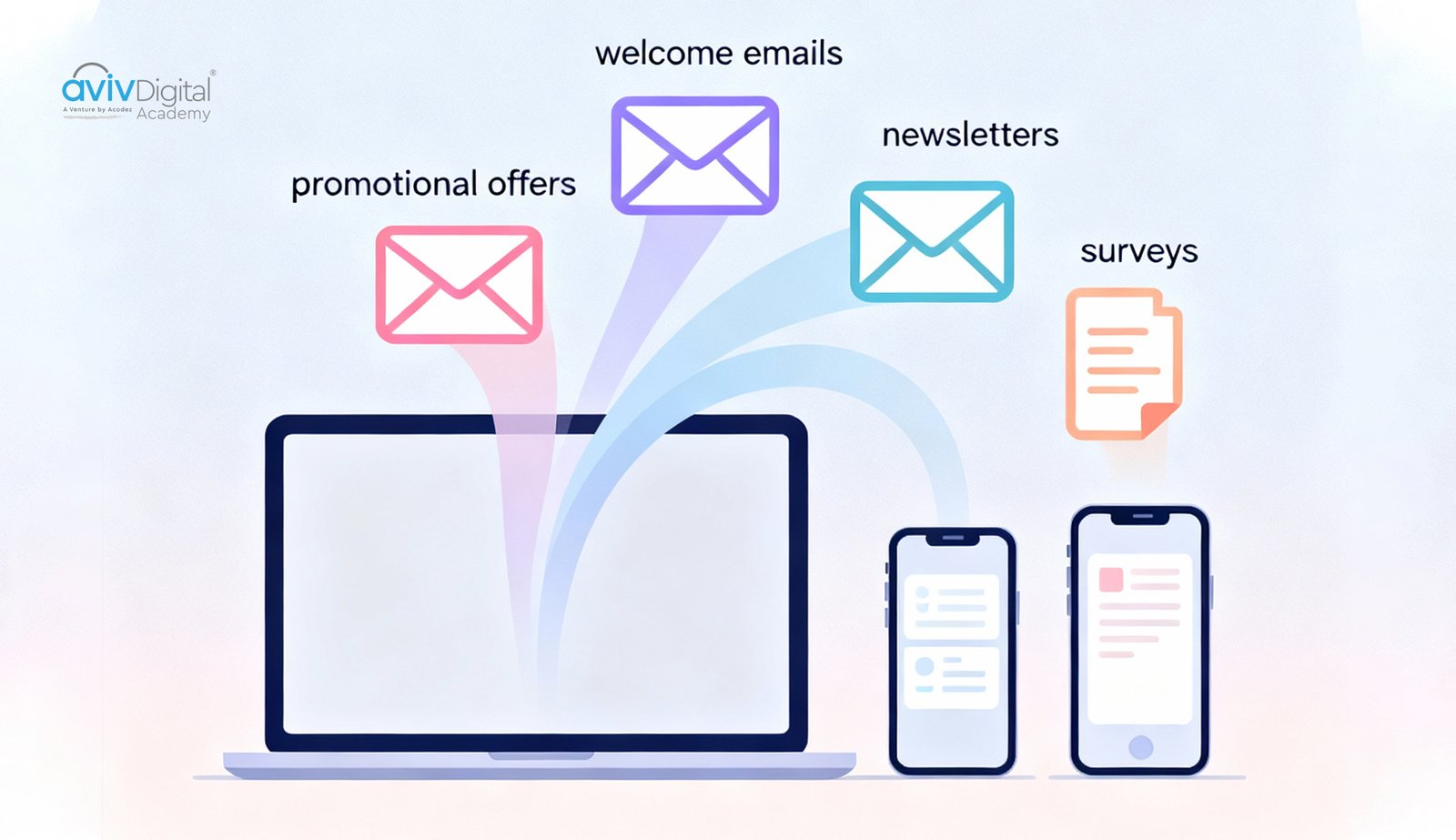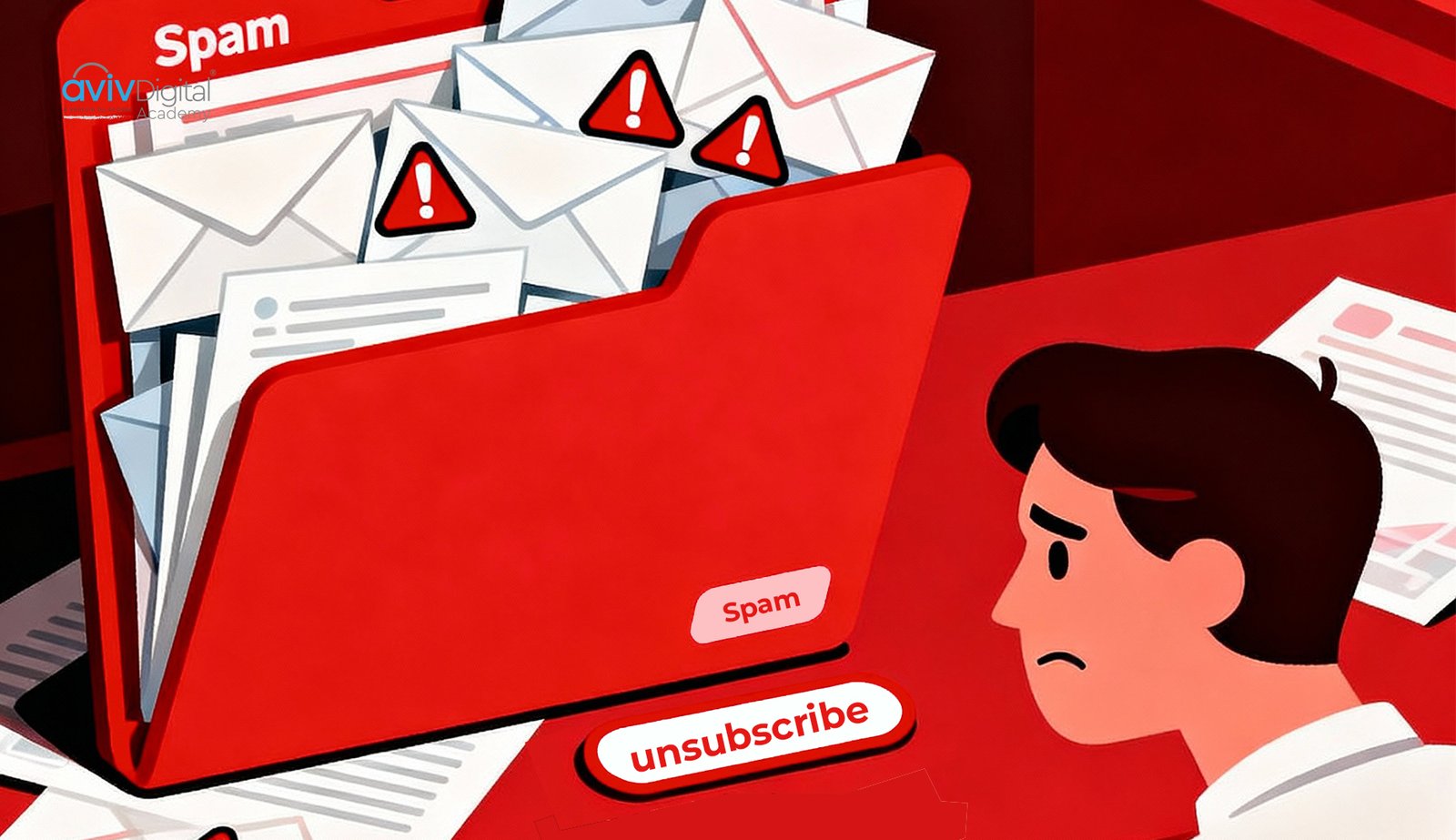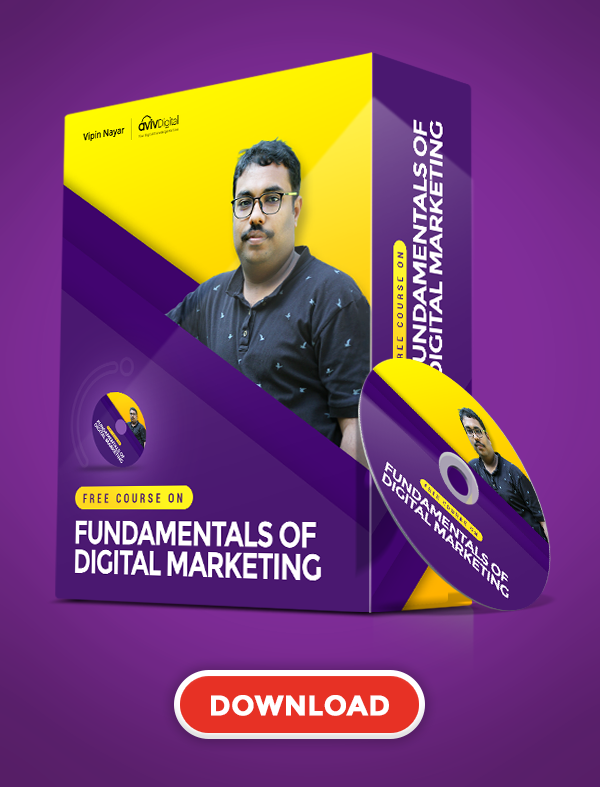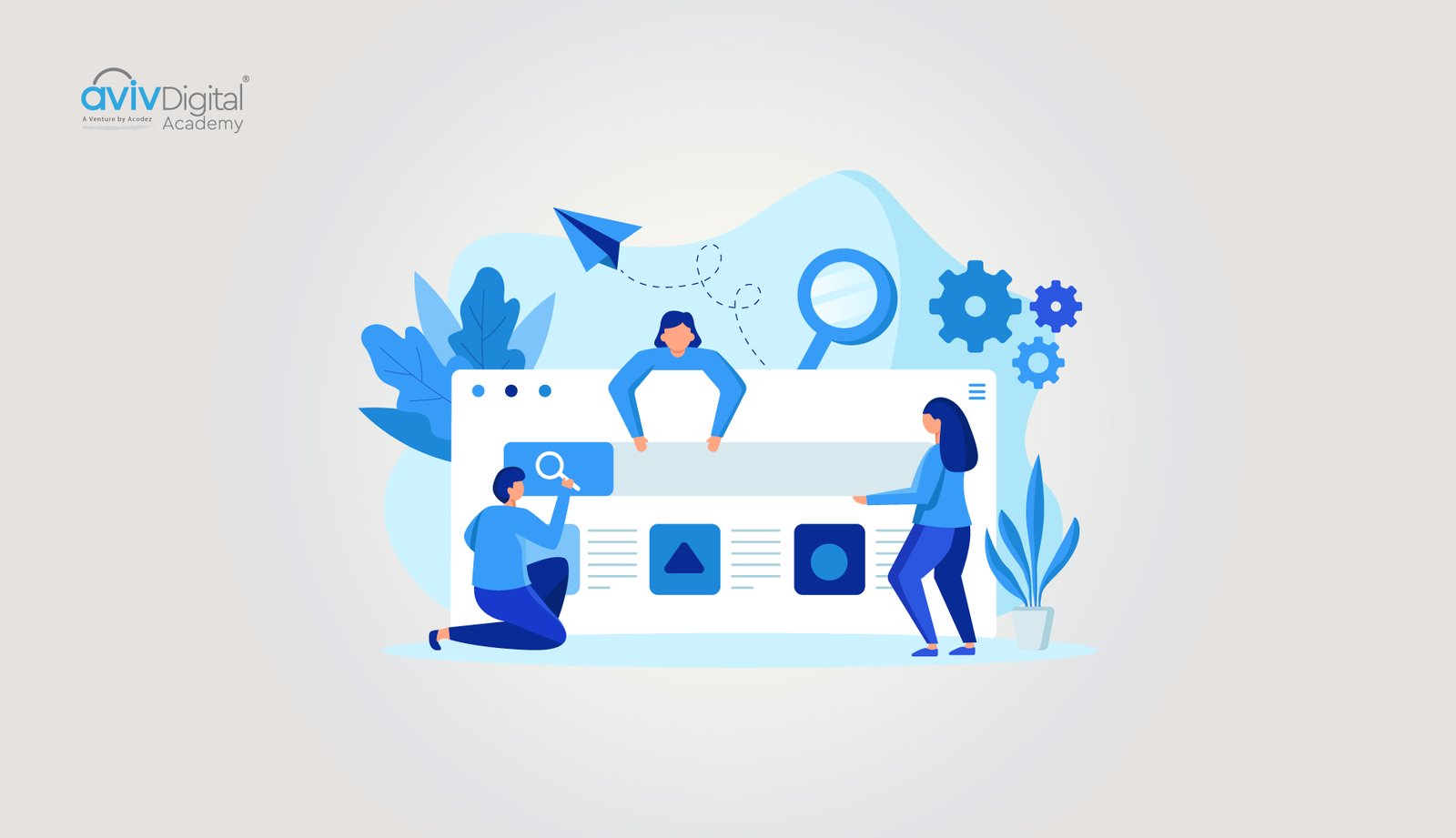
Scroll past the social media noise and you’ll find one marketing channel quietly outperforming the rest: that is, email. In the era of trends fading faster than they appear, Email marketing continues to prove its relevance and effectiveness. While other channels depend on algorithms, email marketing succeeds through consistency and personalisation. It’s true, email has picked up a bad reputation for spam over the years. But good email marketing isn’t about blasting inboxes. It’s about earning trust, one click at a time. Nearly 4.6 billion people worldwide use email as of 2025, with this number projected to reach 4.8 billion by 2027Before we get into the advantages and disadvantages of Email marketing, we need to understand what it really means.
What is Email Marketing
In the marketing world, email marketing is seen as a way to reach people through their inbox to promote something new, share updates, or stay connected. It’s about creating something people actually want to open. Successful email marketing is built on trust and timing, but also on understanding your audience. It’s about understanding what people actually care about and showing up with something that adds value. Think of it as a digital handshake, your brand meeting someone where they already are. A welcome note, a quick update, or a thoughtful offer. Each one is a small moment to build connection and trust. Email marketing is only one part of the bigger digital marketing world. To see how everything connects and to build the skills that help you stand out, get training from the best digital marketing course in Calicut.
Types of Email Marketing

Not all emails serve the same goal. Every one of them has a role to play in turning attention into trust, and trust into long-term connection. Some introduce your brand, others keep people interested. And together, they form the core of any good email strategy. Here are a few key types that make up a strong email marketing strategy.
- Welcome Emails: Welcome emails are where relationships start. They help new subscribers get familiar with your brand, your tone, and what kind of value you bring. A well-written one sets expectations and builds trust from day one. Welcome emails have an open rate of 63%, significantly higher than regular promotional emails
- Promotional Emails: Promotional emails are where you highlight your offers, products, or services. But they work best when they offer value instead of pressure. A well-timed promotion feels like an opportunity, not an interruption
- Lead Generation Emails: These emails help you connect with people who might be interested but aren’t ready to buy yet. They usually offer something valuable. A free resource, a discount, or an invite that earns attention and builds trust before the sale.
- Newsletter Emails: A newsletter is your way of keeping your brand present in someone’s inbox. They keep people updated, informed, or inspired without asking for anything in return. The best ones feel like a friendly check-in, not an obligation to open. But something they actually want to read.
- Transactional Email: Transactional emails keep things running smoothly. They confirm actions, share updates, and give reassurance. Every one of them is a quiet chance to build trust without needing a sales pitch.
- Re-engagement Emails: These emails can help you get your old customers back. A simple reminder, update, or offer can be all it takes to do that. It’s about reminding people why they connected with you in the first place.
- Survey or Feedback Emails: Feedback emails help you turn your audience’s voice into your biggest asset. They help you understand what’s working, what’s not, and what your audience actually wants. A short, honest question can go a long way in showing people that their opinions matter.
Psychology of Email Marketing
Behind every successful email campaign is a bit of psychology at work. It’s about understanding what grabs attention, what builds trust, and what motivates someone to click. People don’t open emails because of fancy designs; they open them because something feels relevant, personal, or timely. From subject lines that spark curiosity to content that makes readers feel understood, the psychology of email marketing is all about connection. With that in mind, let’s look into the advantages and disadvantages of email marketing.
Top Advantages of Email Marketing

One of the most searched questions about email marketing is “Why email marketing is important?” The short answer – because it works. Despite all the new tools and platforms, email remains one of the most effective ways to build lasting connections with your audience. Let’s look at some of the main advantages that prove why it still works.
1. Cost-effective marketing channel
It’s one of the most affordable ways to reach a wide audience and still get results
2. Direct and personalised communication
It’s one of the few ways to reach people personally, right in their inbox.
3. Builds customer relationships and loyalty
Each email is a small reminder that your brand values connection, not just clicks.
4. Easy to automate and scale
With smart automation, your emails land where they should, exactly when they should, and it scales effortlessly as your audience grows.
5. High Return on Investment
Email marketing yields some of the best returns for the time and money invested.
6. Measurable performance and analytics
Every campaign gives you real feedback, showing what’s working and what could be better.
7. Great for customer retention
It helps to retain customers by staying in touch and building a connection
Common Disadvantages of Email Marketing

1. Risk of being marked as spam
Even well-written emails can end up in spam if you send too often or sound too pushy.
2. Low open and click-through rates
Not everyone who gets your mail will actually read or click through it.
3. High competition in crowded inboxes
With everyone trying to sell or say something, it is hard to stand out.
4. Requires good content and strategy
Without a clear strategy and strong content, you won’t get the attention of the customers.
5. Deliverability and technical issues
From spam filters to server issues, a lot can go wrong before your email even reaches the inbox.
6. Subscriber fatigue and unsubscribes
Flooding your customers’ inboxes will only push them to unsubscribe.
7. Legal and privacy concerns
With privacy laws like the DPDP Act 2023, even one mistake can cost you trust and money
Best Practices for Successful Email Marketing Campaigns
According to a 2023 survey, 60% of customers prefer email as their way to communicate with brands. That means your emails aren’t just promotions, but conversations. To make the most of it, here are a few simple practices to help you create emails people actually want to open.
- Build a quality email list: Focus on reaching the right audience, not just anyone online.
- Personalise your emails: A little personal touch goes a long way. Make every mail feel like it was written for them.
- Focus on consistency and quality content: Show up regularly with something worth reading, and people will keep coming back.
- Use automation wisely: Use automation to stay consistent, not to forget your audience.
- Test and analyse your campaigns: Every campaign teaches you something; the data helps to understand your customers.
- Respect privacy laws and permissions: Respecting privacy isn’t optional. It’s how you earn trust and stay out of trouble.
- Include clear calls to action: A clear call to action turns attention into action. Make it obvious and easy.
Conclusion
Email Marketing has come a long way from being a promotional tool to something that actually builds a connection between customers and brands. Despite the predictions that emails will be irrelevant, email marketing has proved otherwise. It still prevails as the most preferred way of communication by customers. But like any strategy, it’s not perfect. The advantages and disadvantages of email marketing really come down to how you use it. When you put care and consistency into your emails, people notice. That’s what turns messages into connections and keeps email marketing as powerful as ever.
Aviv Digital Academy is one of the leading Digital Marketing Course in Calicut. We offer a wide variety of globally recognized certification programs that include SEO, SEM, SMM, Email Marketing and Inbound Marketing courses. For more details, Contact us at: +91 8156998844
FAQ
Which Email Marketing tool is best?
It really depends on where you are in your email marketing journey. Mailchimp and MailerLite are great if you’re just getting started. But if you’re after more advanced automation and analytics, ActiveCampaign or Klaviyo are solid picks.
How effective is email marketing compared to social media marketing?
Email marketing consistently outperforms social media in terms of ROI and conversion rates. While social media excels at brand awareness and discovery, email delivers superior results for direct sales and customer retention. Email marketing generates $36-$42 for every dollar spent (3,600% ROI), compared to social media’s average ROI of 180%. Email also provides better control over your audience, as you own your subscriber list, whereas social media platforms own your audience data. The most successful strategies use both channels: social media for discovery and building awareness, and email for nurturing leads and driving conversions.
Where to learn Email marketing?
You can learn email marketing through the Best Digital Marketing Course in Calicut, where you’ll get practical lessons, expert guidance, and real-world projects to help you master every part of the process.
Will email marketing be replaced by AI?
AI is changing how we do email marketing, but it’s not taking over. It can handle the tech side, sure, but the part that makes people actually care about your message, that still comes from you






